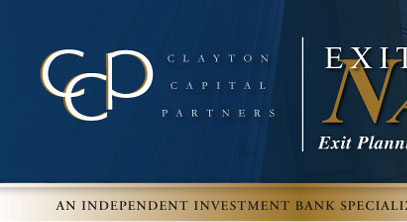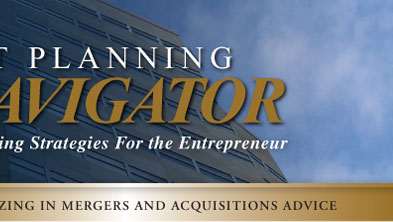As we have discussed in the past Exit Planning Navigator® articles, there are six critical questions that owners need to answer when creating an estate plan that supports an overall comprehensive Exit Plan. These questions include:
1. How can I provide for an equitable distribution of my estate among my children?
2. Who should control and eventually own the family business?
3. How can I use my business to help fuel the growth of my estate outside of my business interests?
4. How do I provide for my family’s income needs, especially those of my spouse and dependent children, after my death?
5. How can I help preserve my assets from the claims of creditors during my lifetime and at my death?
6. How can I work to minimize estate taxes?
The remainder of this article will provide additional insight into and strategies as to how to use your business to fuel the growth of your estate outside of your business interests and how to provide for your family’s income needs.
Working to Fuel the Growth of Your Estate Outside Your Business Interest
The techniques for using your business to fuel the growth of your estate outside the business should be part of your ongoing financial plan, but the reasons for encouraging the growth of your estate outside your business can be compelling and worth reviewing.
If you are like most owners, your assets may consist of your business, a personal residence, a few personal assets and a retirement fund. This typical mix has several typical consequences.
1. Your ownership interest in the business is probably illiquid and therefore, it will be difficult to get much for your business interest when you retire unless you plan well in advance.
2. If the bulk of your estate is in the business, it’s subject to the claims of business, as well as non-business, creditors and, of course, to the ongoing risks of any business.
3. By increasing the value of your non-business estate, assets become available that can ultimately be given to children who are not active in the business.
4. Transferring wealth from the business to you is a natural part of preparing for retirement or any other type of ownership transfer.
5. Taking wealth from the business lowers the value of the business and makes it less tax costly to sell (or gift it) during your lifetime.
6. And finally, income generated from assets outside of the business will normally not be subject to FICA and it provides a base for family income.
Since your situation will be unique to your objectives and your business, it is important
to meet with an experienced Exit Planning Professional to review the situations listed
above and create a plan that incorporates these potential consequences into an overall
solution. When you meet with your Exit Planning Professional, he or she will provide
specific wealth preservation and planning recommendations, such as moving income
and income producing assets from the business to you. These recommendations may
include creating a retirement plan, purchasing a building or equipment outside of the
corporation that then is leased to the business, or creating documentation of property
that is licensed by you or a new entity you’ve created for your company. Techniques
such as these lower business value and provide you and your family with an income
stream generated by the business that is not likely subject to the claims of business
creditors. These assets then can be distributed, eventually, to non-business active
children to help create an equitable distribution of family assets to all children –
business active and non-business active alike.
How Do I Provide For My Family’s Income Needs After My Death?
In addition to planning for your family’s income during your lifetime, your spouse and
dependent children will have needs after your death. There are several components
that address these needs.
One component will be the non-business income-producing assets that you created
during your lifetime, which we described above. Another will be getting the business
value to your family by means of a buy-sell agreement that, at your death, requires the
active children, a co-owner, or a third party to purchase your business interest in
exchange for money, which may be funded by life insurance.
The third component is to design your estate plan so that the assets benefit your
spouse, while ultimately passing the business to your children with the fewest tax
consequences. This is best achieved by creating an estate plan to take advantage of
the estate tax deductions existing at your death, as well as an irrevocable life insurance
trust, which owns life insurance that could be paid for primarily by the business under a
“split dollar”* plan.
Basically, split dollar agreements require the business to pay the bulk of the premiums,
while the insurance death benefit proceeds are owned and payable by the life
insurance trust. At the death of the insured, the corporation gets back the cash value to
compensate it for making the premium payments, while the balance of the death
proceeds are paid to the life insurance trust with minimal estate tax consequences. This
is a way of having the business and, indirectly, the children active in the business pay
for life insurance premiums benefiting the spouse and perhaps the other non-business
active children.
*Split dollar arrangements are subject to IRS Notice 2002-8 and Proposed Regulations
that apply for purposes of federal income, employment and gift taxes. 


